|
My current rifle building project is a "fantasy rifle." By
that I mean a rifle that is very unlikely to have ever
existed in historic times. A .40 caliber, flintlock,
squirrel rifle with SILVER mounts. Silver was
expensive in the 18th and 19th centuries and its
use in gun mounts was mostly limited to pistols and
fowling pieces made in Europe and/or in major cites along
the coast.
It will have a Getz barrel and one of Jim Chamber's
late Ketland locks. The mounts will be my work as will
the stocking and art.
It will be in the "step toe" style made in Botetourt
County, Virginia in the first quarter of the 19th
Century. Rifles with similar architecture can be seen in
Wallace Gusler's article The Step Toe Group in
the May 2004 issue of Muzzle Blasts magazine.
Blank
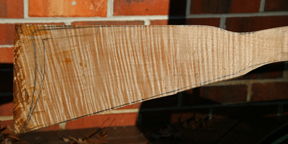
Sugar maple blank with barrel inlet.
This blank is perfectly quarter sawn and was cut from the stump
so that the curl follows the line of the butt and the grain
flows better through the wrist.
FITTING BUTT PIECE
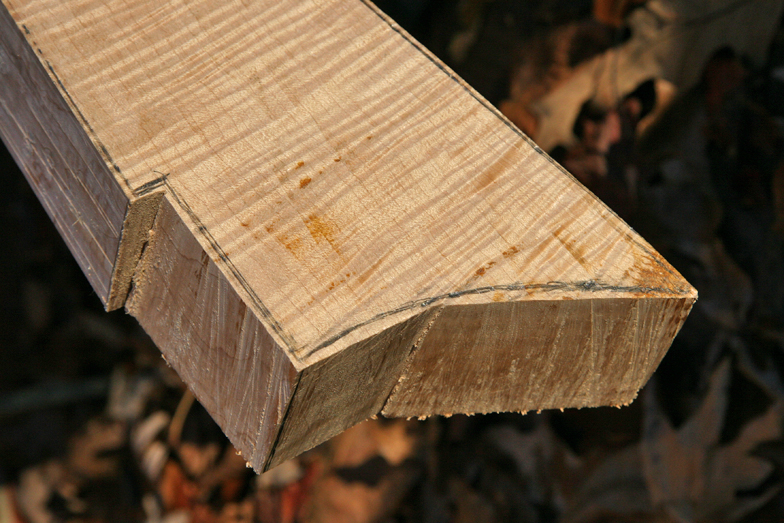
Four cuts
with a handsaw were used to begin fitting the butt
piece.(top)
TWO SCREW TANG
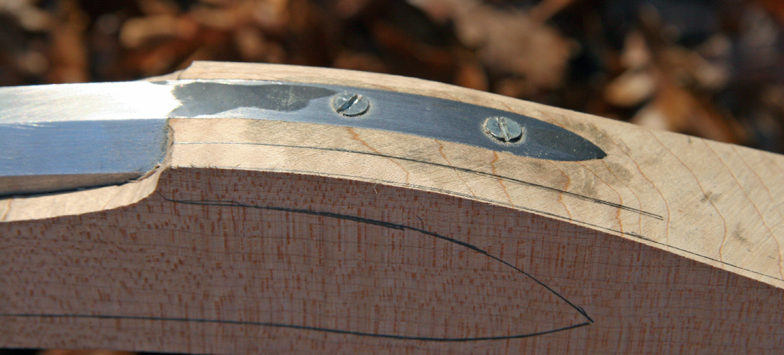
The tang was forged out to match the regional/period style -- a tang attached
by two wood screws. Note ray fleck on side plate panel, an indicator of a
perfectly quarter-sawn blank. (top)
BUTT PIECE ON & STOCK ROUGH SHAPED
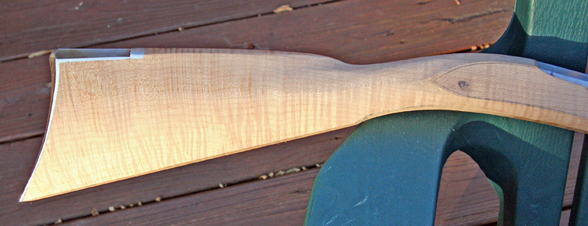
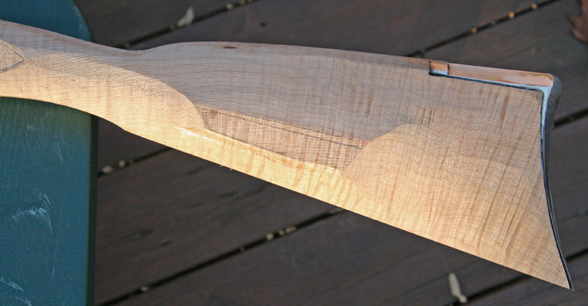
Sterling silver butt piece was cast at the Geddy Foundry, one of
Colonial Williamsburg's trade sites. James Geddy Sr. was a gunsmith and
brass founder and was established in Williamsburg before 1738. He died
in 1744 leaving 4 sons and 3 daughters. David and William advertised in
1751 that they "carry on the Gunsmith's, Cutler's, and Founder's
Trade..." James Jr. was a sliversmith and he built the house that now
stands on the site in about 1760.
The pattern for the butt piece was originally forged in iron by
Wallace Gusler almost 40 years ago. (top)
LOCK PLATE INLET
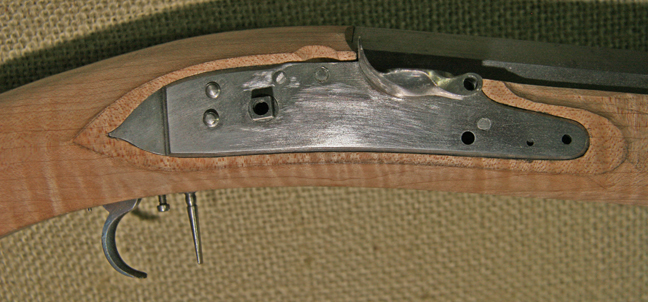
Lock is a late Ketland from Jim Chambers. Because this
rifle has a step toe stock the set triggers and trigger
guard have to be fitted before the final butt stock
shaping can be done.
GUARD

Sterling silver casting for guard. Like the butt piece,
this was cast at the Geddy Foundry in Colonial
Williamsburg before the Foundry and Gunsmith were merged
into one operation in the winter of 2009. (top)

Filed but not polished.

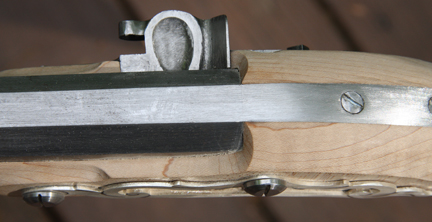
One way to handle the transition from the barrel quarter
flats to the stock on either side of the tang by using a
curved chamfer.

Sketch of side plate sketched on drawing paper and cut
out with scissors. This design is based on a couple of
rifles made by Alexander McGilvery who worked for a time
in Botetourt County.
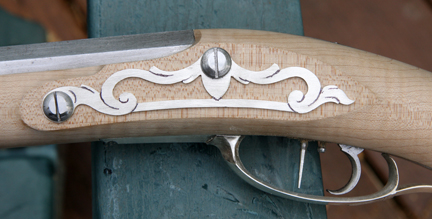
Side plate on stock but not inlet
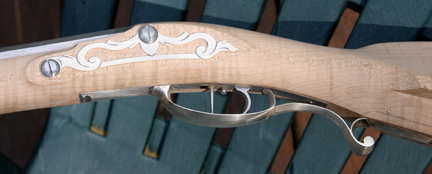
Guard inlet and location of the step in the toe matched
with guard.
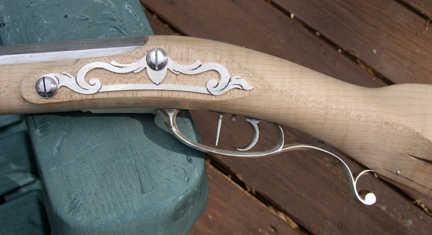
(top) |